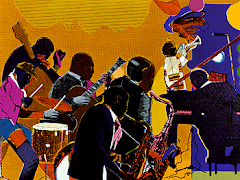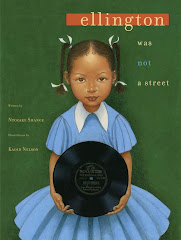Subscribe to:
Post Comments (Atom)
skip to main |
skip to sidebar

By Romare Bearden

By Romare Bearden

Don't get me wrong, I love my Beyonce,Avril Lavigne and Chris Brown. But guys, there is a whole world out there and we need to listen to it.

Ntozake Shange and Kadir Nelson
A Culture Blog for Teens
Total Pageviews
Look Who's Included...
Poetry Society of America
Winter Tangerine Review
Poetry as a Source to Reconnecting to Home
Check out Sweety High's Interview With Poet Sojourner Ahebee
Listen to Africa; My poem is available as a poster which also features a beautiful map of Africa.
Interlochen Summer Arts Camp/Click on Image to Learn More
Sojo's Trumpet
Out Chorus

By Romare Bearden
The Piano Lesson

By Romare Bearden
Mexican-American Singer Lila Downs

Don't get me wrong, I love my Beyonce,Avril Lavigne and Chris Brown. But guys, there is a whole world out there and we need to listen to it.
Ellington Was Not Always A Street

Ntozake Shange and Kadir Nelson
My Favorite Books
- Anne of Green Gables,The Giver,Heir Apparent
- The Mysterious Benedict Society, The Series of Unfortunate Events, Fever 1793,The Vile Victorians, Schooled,Bud- Not Buddy,The Watsons Go To Birmingham,The Penderwicks on Gardam Street,The Skin I'm In,Kiss My Book,Cecile-Gates of Gold, Saba-Under the Hyena's Foot,Thank You Lucky Star





















No comments:
Post a Comment